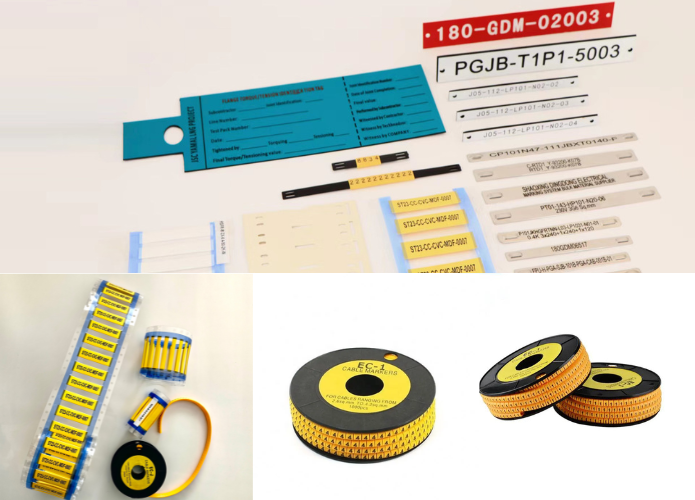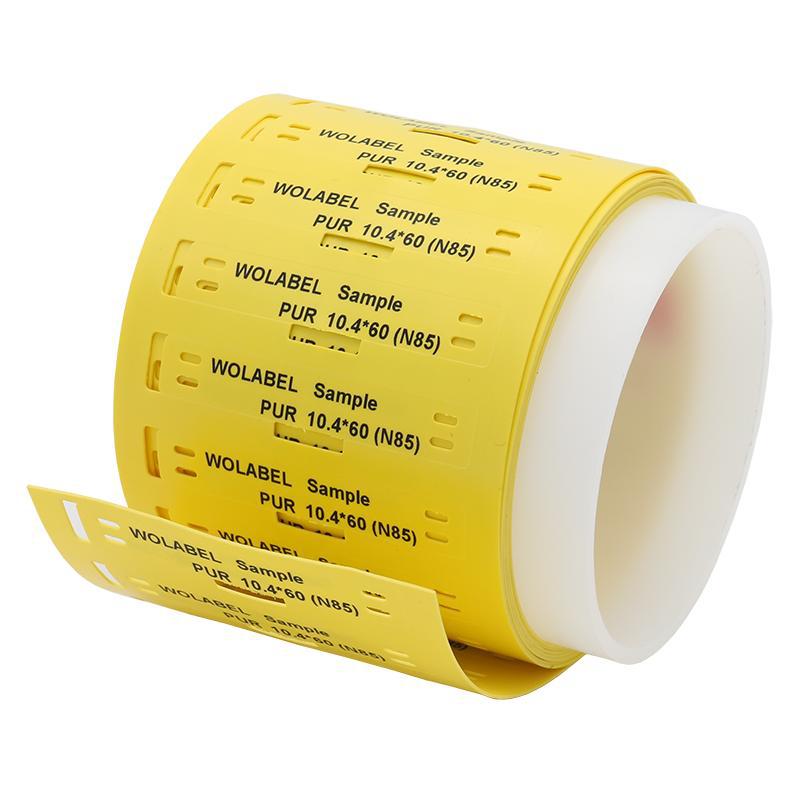
- Supports
The Essential Guide To Electrical Wire Markers: Types, Uses, And Installation Tips
Introduction
In electrical work, proper identification of wires and cables is critical to ensuring safety, efficiency, and organization. Electrical wire markers and electrical wire markers tags serve as an essential tool for electricians, engineers, and technicians, helping to distinguish between different wires and circuits. Whether you're managing an industrial power system, wiring a commercial building, or handling a simple home electrical project, using wire markers can prevent costly mistakes, reduce troubleshooting time, and ensure compliance with industry standards.
This guide provides a deep dive into electrical wire markers, including their types, applications, and best installation practices. By the end, you'll have a clear understanding of how to choose the right wire markers for your needs and how to apply them effectively.
1. What Are Electrical Wire Markers?
Definition and Purpose
Electrical wire markers are identification labels used to mark individual wires and cables. These markers help electricians and maintenance personnel differentiate wires in electrical systems, reducing the chances of miswiring, accidental disconnections, or troubleshooting difficulties.
Key Features of Electrical Wire Markers
Designed to be durable and resistant to environmental conditions
Available in multiple formats, including wrap-around, heat-shrink, and clip-on types
Provide high-contrast printing for clear visibility
Help ensure compliance with safety and building codes
Can be customized for specific labeling needs
By using electrical wire markers tags, professionals can maintain a well-organized wiring system that simplifies installations, repairs, and routine maintenance.

2. Why Are Electrical Wire Markers Important?
Electrical installations can involve thousands of wires, making organization and identification crucial. Here’s why electrical wire markers should be a staple in any electrical project:
a. Enhancing Safety
Electrical work involves significant risks, including electrocution, short circuits, and fire hazards. Proper wire labeling reduces these risks by ensuring wires are correctly connected and handled.
For example, in industrial environments, high-voltage power lines must be clearly marked to prevent accidental contact. Without proper identification, workers could mistakenly touch live wires, leading to severe injuries or fatalities.
b. Streamlining Troubleshooting and Maintenance
When electrical issues arise, having labeled wires makes it much easier to diagnose and fix problems. Without electrical wire markers tags, technicians would have to spend excessive time tracing wires manually.
For instance, in an office building, a sudden power failure may require an electrician to locate a faulty circuit. If wires are labeled, identifying the problematic wire is quick and straightforward, minimizing downtime.
c. Ensuring Compliance with Electrical Standards
Many industries and regulatory bodies, such as the National Electrical Code (NEC) and the Occupational Safety and Health Administration (OSHA), require proper wire labeling. Failing to comply with these regulations can lead to penalties, failed inspections, or even legal liability.
d. Improving Organization and Aesthetics
Neatly labeled wires contribute to a professional-looking electrical installation. A cluttered, unlabeled panel makes maintenance and modifications a nightmare, whereas a well-marked system allows for easy navigation.
3. Types of Electrical Wire Markers
There are various types of electrical wire markers available, each suited for specific environments and applications. Here’s an overview:
a. Pre-Printed Wire Markers
Contain pre-printed numbers, letters, or symbols
Useful for quickly labeling standard electrical components
Typically available in rolls or booklets
Commonly used in panel wiring and circuit breakers
b. Write-On Wire Markers
Allow customization using a marker or pen
Ideal for situations where custom labels are required
Often used in low-volume electrical projects or temporary setups
c. Heat Shrink Wire Markers
Made from heat-sensitive tubing that shrinks when heated
Provides a secure, long-lasting label
Resistant to abrasion, chemicals, and extreme temperatures
Commonly used in aerospace, automotive, and industrial wiring
d. Self-Laminating Wire Markers
Feature a clear protective layer that shields the printed information
Ideal for environments where labels may be exposed to moisture, oil, or dirt
Used extensively in manufacturing and automation industries
e. Clip-On and Slide-On Wire Markers
Small plastic or rubber clips that snap onto wires
Reusable and easy to reposition
Best suited for temporary labeling needs
f. Wrap-Around Wire Labels
Wrap around the wire to provide a 360-degree view
Made from flexible materials like vinyl or polyester
Commonly used in networking, telecommunications, and data centers
g. Flag-Style Wire Markers
Extend outward from the wire like a small flag
Offer a larger surface area for text or symbols
Used in situations requiring detailed wire descriptions
4. Choosing the Right Electrical Wire Markers
Selecting the best electrical wire markers tags depends on several factors:
a. Environmental Conditions
For outdoor or industrial use, opt for heat shrink or self-laminating markers that withstand harsh conditions.
For controlled indoor environments, standard adhesive or wrap-around markers may suffice.
b. Wire Size and Type
Ensure the marker fits snugly around the wire.
For large cables, consider wrap-around or flag-style markers.
c. Readability and Visibility
Choose high-contrast markers with large fonts for easy reading.
Use color-coded markers for additional clarity.
d. Adhesion and Durability
For permanent installations, select heat-shrink markers or laminated labels.
For temporary use, clip-on or write-on markers work best.

5. How to Properly Install Electrical Wire Markers
Step 1: Select the Right Marker
Determine the best type of marker based on the application and environment.
Step 2: Clean the Wire Surface
Remove dust, oil, and debris to ensure proper adhesion.
Step 3: Apply the Marker
Clip-on markers: Snap onto the wire.
Adhesive markers: Wrap securely around the wire.
Heat shrink markers: Use a heat gun to shrink them in place.
Step 4: Verify Labeling
Ensure all wires are correctly labeled and easy to read.
Step 5: Document the Labels
Keep a wiring diagram or digital record for future reference.
6. Best Practices for Using Electrical Wire Markers Tags
Standardize Labeling: Use a consistent labeling format for all projects.
Use Abbreviations and Colors: Enhance clarity with industry-standard codes.
Place Labels at Key Points: Label both ends of the wire and junctions.
Inspect and Replace Faded Labels: Regular maintenance ensures long-term readability.
Invest in Quality Markers: High-quality markers reduce rework and enhance durability.
7. Applications of Electrical Wire Markers Tags
Industrial Wiring
Used in factories and power plants for managing complex electrical systems.
Residential Wiring
Helps electricians and homeowners organize breaker panels and circuits.
Automotive and Aerospace
Essential for labeling wiring in vehicles and aircraft to prevent errors.
Data Centers and Networking
Wrap-around labels help organize fiber optic and Ethernet cables.
Marine and Offshore Applications
Waterproof wire markers ensure safe electrical connections in boats and ships.
Conclusion
Using electrical wire markers and electrical wire markers tags is a simple yet powerful way to enhance safety, efficiency, and compliance in electrical work. Whether you're an industry professional or a DIY electrician, properly labeled wiring can save time, prevent costly mistakes, and improve overall system organization.
Related Cable Accessories
LATEST NEWS
Inquire About Cable Accessories
Address:
NO.17 Liangwang Shan Road, Lianghu Industry, Lianghu Street, Shangyu Area, Shaoxing City, Zhejiang Province, China






